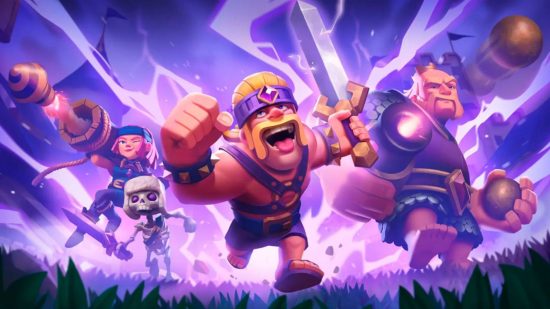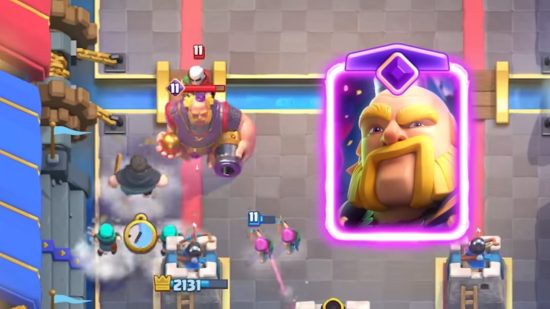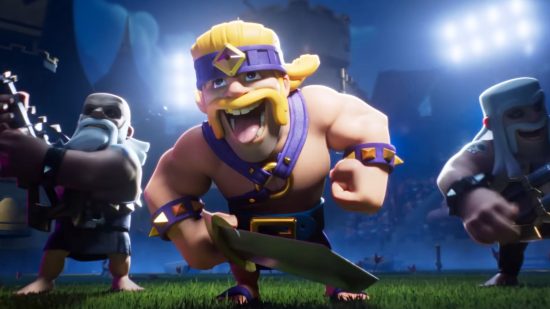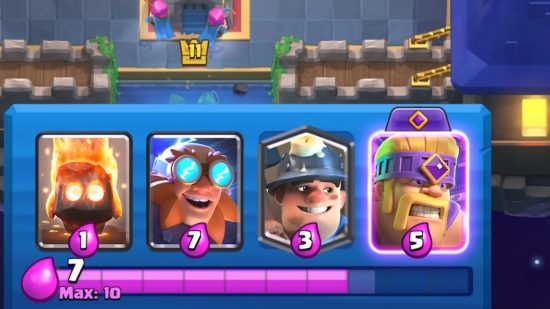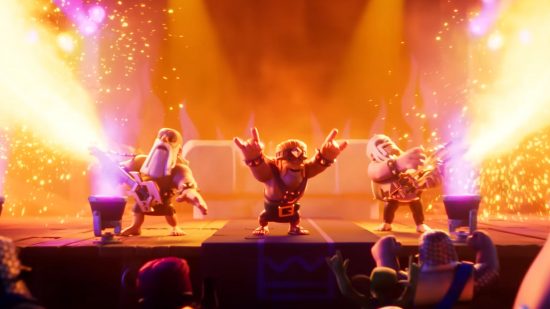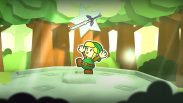It’s not often that a successful mobile title decides to change the game, but with card evolution in Clash Royale, that’s exactly what Supercell has done. Arriving more than seven years after the original release of the card-based battling title; this new mechanic adds more than a few layers to competitive play, it essentially reinvents the meta.
So, to properly get our heads around how card evolution works and how it came to pass, we got to spend a little time talking with Pavel Volkov, a game designer with Supercell who’s been around since the early days of Clash Royale. While originally joining six years ago as a data scientist, Volkov is now part of the development team implementing new ideas and characters into Clash Royale, including card evolution.
Figuring to start at the start, I asked Volkov how the idea first came around. “So, we were thinking about what makes Clash Royale stand out from many other card games and strategy games. And one of the things we thought is interesting was the cycles mechanics, or how the card goes back to your hand eventually. And we thought, what about just doubling down on this uniqueness in our game? And then we thought, let’s add more content to the existing cards because it’s a nice way to bring more life and freshness to the familiar and beloved characters.”
It’s clear that from the off, the team at Supercell wanted the card evolution mechanic to fit in the already well-developed world of Clash Royale. We’ve seen popular games make big changes before and the community resist, especially with mobile titles like Pokemon Go. In Volkov’s own words. “we wanted players to kind of just play the game as they used to all these years but with an extra layer of strategy.”

At this point, if you’re not a Clash Royale regular, you’re probably wondering what card evolution is. Simply put, it’s a fresh mechanic that allows you to summon a souped-up form of a specific card, with four currently in the game, to make the meta a bit more complex. It’s not new characters exactly, more of a remix of what we already had. I asked Volkov if there were any restrictions during the development of the card evolution concept, or if they had free reign to experiment a little.
“We cannot have enough freedom to play with. I would say, as a person who is focused on gameplay, I wanted to keep the readability as much as possible. To me, it’s very important. I think that’s the main pillar that makes Clash Royale palatable to broad audiences. So yeah, that was probably the only restriction I kept in mind.”
While there doesn’t seem to be internal pressure at Supercell, things are very different in the digital Wild West of the internet. To put it lightly, gaming communities aren’t always super keen on in-game changes. With this in mind, I asked Volkov if he felt any additional pressure during the development of the card evolution concept to deliver something agreeable to the vocal Clash Royale community.
“Clash Royale is a seven-year-old game, and, to maintain this freshness and keep the game as a service, we need to keep innovating in order to be relevant. So this is why we sometimes need to add more strategically, which is card evolution in my mind. We need to, remind players what Clash Royale is about and why they enjoy it. It’s about deploying cards during the battle at the right moment, at the right position, and card evolution makes it even more of that thing that players want.”
What I’m getting, and hopefully you are too, about the card evolution concept is that it’s not here to change the game, but elevate it. Through his answers, Volkov makes it clear that the team at Supercell isn’t trying to reinvent the wheel, they’re just adding a go-faster stripe that allows that wheel to barrel down any road with a little bit more gusto. That’s what card evolution is: the icing on the cake.
For Volkov, card evolution also helps move what can be an occasionally rigid meta-game. “It adds another strategic layer, thinking ‘Do I need to use my evolution now, or do I build for another better push?’ If I’m using card evolution, how do others play around it? How do they build a deck around it? It adds a bit more of this spice.”
In just a little of my own playtime, I can agree with Volkov that card evolution does bring the spice, like a big blob of hot sauce on a sticky chicken wing. While Clash Royale already gives you enough to think about in how to set up your deck, or who to play and when, card evolution adds another chaotic element in that you’re never sure if you’re facing down a plain old firecracker, or the evolved firecracker. Admittedly, each is a daunting prospect, but it’s never been more difficult to prepare.
Something that struck me during my research for my chat with Volkov is just how much of a balancing act – and I mean balancing – adding a new mechanic to a live service game is. From my experience talking to developers of other games that utilize card mechanics, I know adding just one new card can completely shift the meta, occasionally leading to a gaming environment where everyone plays the same way if not balanced correctly. So, I asked the Supercell developer how the team managed to balance the new mechanic.
“It is a good question because strictly speaking card evolution is an extra power. So there are multiple angles we can look at the balancing. It’s not a coincidence that we launched four evolutions to start with, as they kind of represent different roles in the deck building and the Clash Royale metagame. So like Royal Giant is a wind condition that goes straight to buildings. Barbarians is a swarm and also represents an iconic character of Clash Royale. Skeletons are a cheap unit, like a distraction or a cycle card. And Firecracker, she’s a ranged support unit.
“They also kind of counter each other nicely because Barbarians are good against Royal Giant, Firecrackers counter against the Barbarians, and so on. So there was a lot of thinking about how to launch this feature. From now on, we will see the user rates and the win rates and do tweaks later on.”
As it had been a couple of weeks since the arrival of card evolution in Clash Royale, I then asked Volkov if there had been any feedback from the community. “First of all, I would like to take an opportunity and say thanks to all the players who give us feedback on different platforms. We appreciate the feedback, both positive and negative feedback. For me, indifference is what is the worst. If there is feedback, it means players care, and with the help of community managers, we’re trying. We try to distill the feedback into some bullet points. Some are actionable, some are more indicative of certain problems, and we need to just figure out what to do with them.”
From that answer, and Volkov’s earlier thoughts on pressure, it’s refreshing to see a developer wholeheartedly embracing the community. Sure, this is still a mobile game with microtransactions and cheeky bundles that pop up when you most need them, but there’s a clear engagement with the community coming through in my chat with Volkov. If card evolution really does bring the spice, then Volkov is Guy Fieri.
Finally, for a bit of fun, I asked Volkov for his favorite part of the whole card evolution introduction. “I personally like that it adds a lot of variety. Starting from deck building, the fact that some key interactions are just not the same anymore. Just taking advantage and keeping in mind those critical interactions, you can maybe turn round a losing game.”
All in all, it sounds like both the developers and the community are plenty excited about the arrival of card evolution in Clash Royale. As I’ve touched on throughout this interview, it’s clear how passionate the team at Supercell is about not just the game, but the community, and how receptive they are to bringing ideas that enhance the game. That’s what card evolution is all about – enhancement – and right now Clash Royale feels better than ever.
For more behind-the-scenes chats with developers and studios, check out our Danganronpa interview, Yoko Taro interview, and Monument Valley interview.
